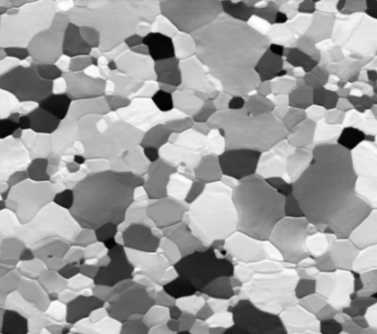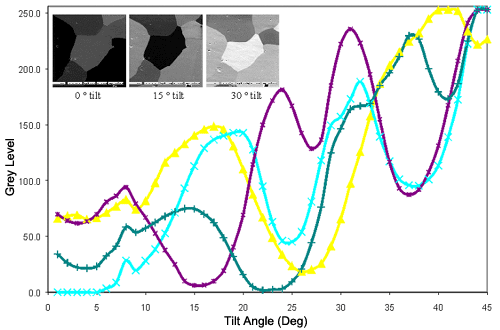 |
Grain Orientation Contrast
|
 |
|
|
|
Grain Orientation Contrast
|

|
FIB combines the capability of specimen preparation and imaging all in
one. In-situ, "stress-free" sectioning using a finely focused beam of
gallium ions has proven to be a powerful tool in the analysis of
materials science specimens. Channeling contrast induced by FIB is more
than four times as intense as that produced by backscattered electrons
in the SEM, and results in spectacular grain contrast, as can easily be
seen in the FIB image of aluminum grains in the image.
|
|
Correlation Between Grey Level Variation of Individual Al Grains and
Sample Tilt
|
|
|
 |
